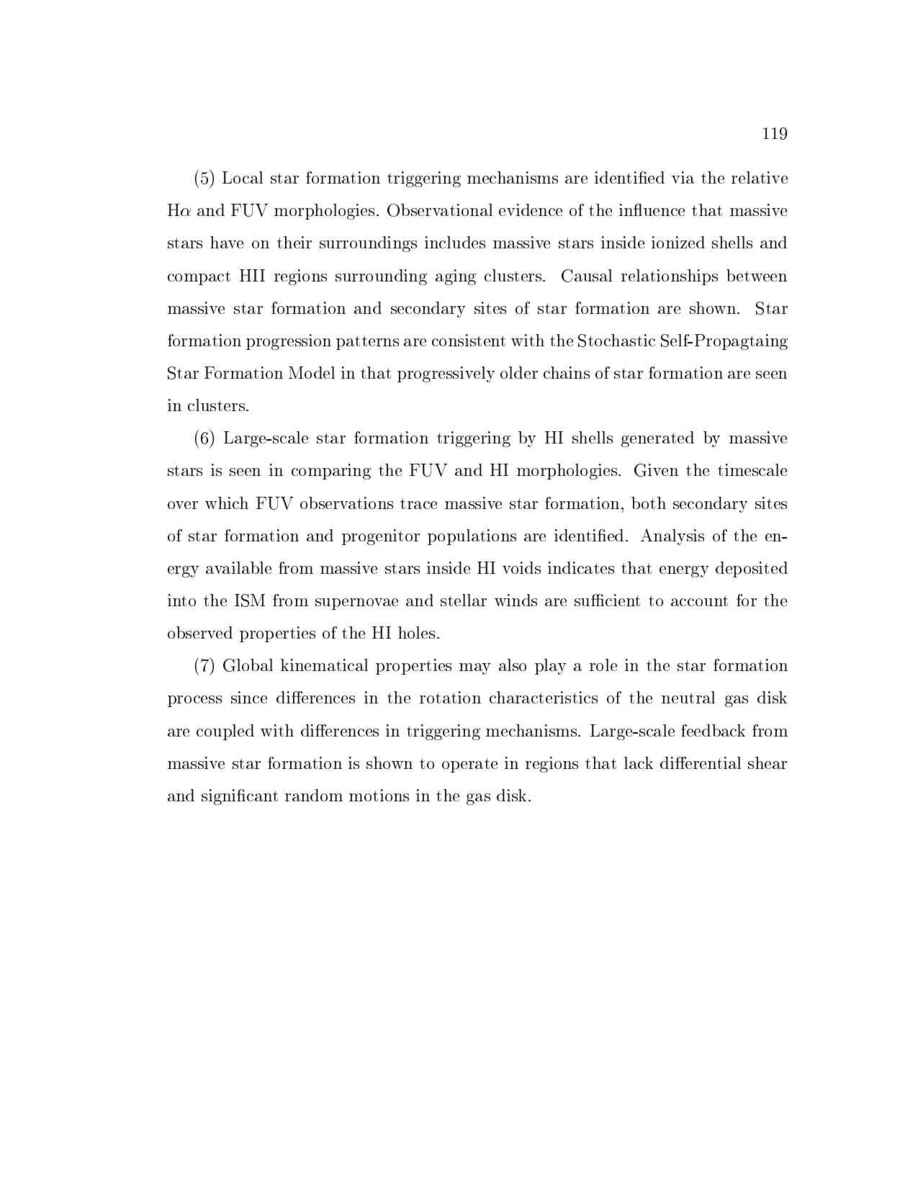Astronomical Applications Department, U.S. Naval Observatory thesis Page 133

119
5 Local star formation triggering mechanisms are identi ed via the relative
H and FUV morphologies. Observational evidence of the in uence that massive
stars have on their surroundings includes massive stars inside ionized shells and
compact HII regions surrounding aging clusters. Causal relationships between
massive star formation and secondary sites of star formation are shown. Star
formation progression patterns are consistent with the Stochastic Self-Propagtaing
Star Formation Model in that progressively older chains of star formation are seen
in clusters.
6 Large-scale star formation triggering by HI shells generated by massive
stars is seen in comparing the FUV and HI morphologies. Given the timescale
over which FUV observations trace massive star formation, both secondary sites
of star formation and progenitor populations are identi ed. Analysis of the en-
ergy available from massive stars inside HI voids indicates that energy deposited
into the ISM from supernovae and stellar winds are su cient to account for the
observed properties of the HI holes.
7 Global kinematical properties may also play a role in the star formation
process since di erences in the rotation characteristics of the neutral gas disk
are coupled with di erences in triggering mechanisms. Large-scale feedback from
massive star formation is shown to operate in regions that lack di erential shear
and signi cant random motions in the gas disk.
